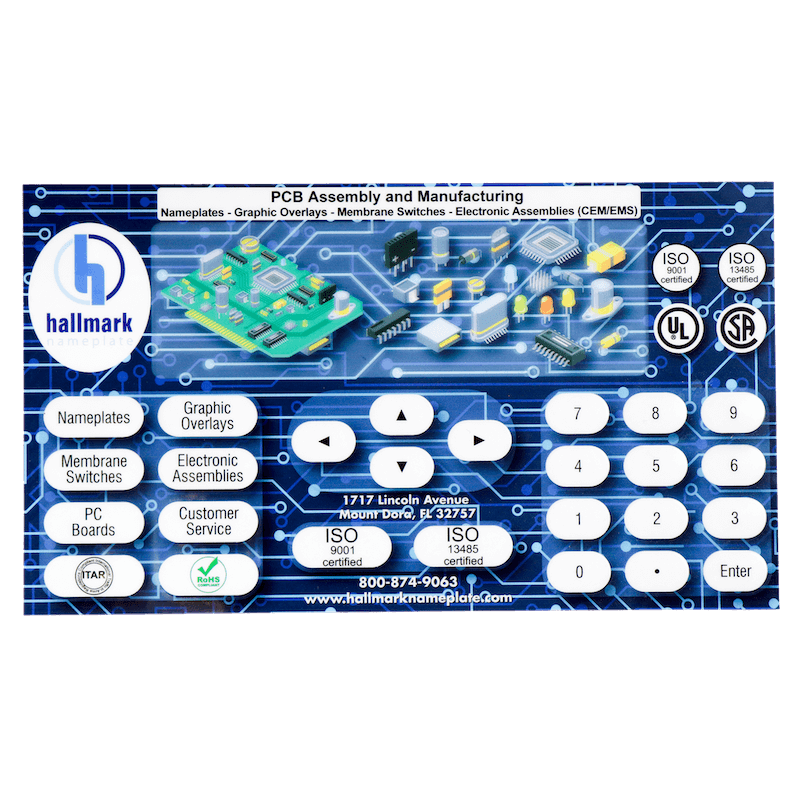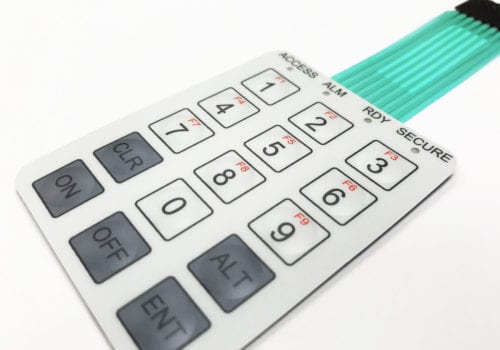Just How Membrane Switches Enable Lightweight and Long Lasting User Interface Solutions
Just How Membrane Switches Enable Lightweight and Long Lasting User Interface Solutions
Blog Article
Membrane Changes Explained: A Comprehensive Guide to Their Advantages
Membrane switches stand for a advanced and versatile service for producing individual interfaces across a variety of markets. As markets progressively seek trusted and reliable control interfaces, comprehending the certain advantages and applications of membrane switches ends up being necessary.
What Are Membrane Buttons?

When stress is related to the membrane button, the layers make call, completing an electric circuit. This easy system enables a large range of applications, from consumer electronic devices to commercial equipment. Membrane layer buttons are frequently created to be water resistant and resistant to dust and impurities, making them suitable for settings where resilience is essential.
Additionally, the versatility of the materials used in membrane layer switches over assists in cutting-edge layouts that can adhere to numerous shapes and measurements. This adaptability adds to their popularity in varied fields, including clinical devices, automobile controls, and home appliances. In general, membrane switches represent a crucial component in modern customer interface innovation, linking the void between individuals and digital systems.
Key Advantages of Membrane Switches
Among the myriad of interface alternatives available, membrane layer changes stand out for their distinct combination of advantages. Among the key advantages is their portable and light-weight style, which permits assimilation right into a vast array of gadgets without adding significant bulk. This is especially useful in applications where space is restricted.
Furthermore, membrane switches deal sturdiness and resistance to ecological elements. They are commonly built with products that can hold up against wetness, dust, and numerous chemicals, making them suitable for rough problems. This sturdiness adds to a longer lifespan compared to standard mechanical switches.
Another significant advantage is the flexibility in customization. Membrane buttons can be published with various graphics, colors, and textures, permitting tailored styles that fulfill certain branding or functional requirements. This adaptability encompasses the variety of layers and circuit alternatives, giving engineers with multiple setups.
In addition, the responsive responses supplied by some membrane layer changes boosts customer experience, making them extra intuitive to run. The convenience of cleaning and maintenance additionally solidifies membrane switches as a practical selection in both consumer and commercial applications. Overall, these essential advantages make them a favored option for several developers and producers
Applications in Numerous Industries
Just how do membrane switches find their place across varied markets? Their convenience and functionality make them essential parts in fields ranging from health care recommended you read to customer electronics. In medical gadgets, membrane buttons are made use of for their convenience of cleansing and resistance to contamination, making certain hygiene in atmospheres where sterility is important.
In the customer electronics market, these switches give smooth, easy to use interfaces that boost product aesthetics while preserving resilience versus deterioration. Automotive applications benefit from membrane changes too, where they are made use of in dashboards and control board, offering reliable performance in challenging conditions.
In addition, commercial equipment utilizes membrane buttons for control board because of their robustness, capability to endure harsh settings, and adjustable designs that accommodate specific functional requirements. The food industry leverages membrane layer switches for their convenience of usage and resistance to spills, making sure operational performance in fast-paced setups.
Inevitably, the flexibility of membrane switches over across these varied applications underscores their important role in modern-day technology, improving user communication while satisfying industry-specific requirements. Their proceeded advancement guarantees more integration into arising fields and cutting-edge products.
Style and Modification Alternatives
The layout and personalization alternatives available for membrane layer buttons are important for customizing user interfaces to meet certain individual demands and aesthetic preferences. These switches can be developed in various shapes, sizes, and designs, enabling smooth integration right into varied applications. The adaptability in design indicates that suppliers can develop distinct interfaces that improve use and keep brand identification.
Custom-made shades, graphics, and appearances can be related to the surface area of the membrane switch, supplying a possibility for branding and user engagement. Additionally, backlighting choices, such use this link as LED illumination, can be integrated to boost visibility in low-light conditions, therefore enhancing performance.
Functional components can also be personalized, consisting of tactile feedback and actuation force, which can be gotten used to suit different user communications. The selection of materials, such as polyester or polycarbonate, enables for variations in longevity and ecological resistance, satisfying the details demands of various sectors.
Eventually, the substantial style and personalization abilities of membrane switches make it possible for firms to produce straightforward and aesthetically appealing user interfaces, guaranteeing that their products satisfy both useful and visual needs properly. Membrane Switches.
Considerations for Implementation
Executing membrane changes calls for mindful consideration of different variables to ensure optimum capability and user experience. Elements such as direct exposure to dampness, extreme temperatures, and chemical compounds can dramatically impact the switch's performance and durability.

Another essential element is the switch's style and design. Making sure that the responsive responses and actuation pressure line up with individual expectations improves functionality. Carrying out individual testing can offer important insights into the ideal style.
In addition, compatibility with electronic parts must be analyzed. The button's wiring must line up with the general system design, ensuring reputable signal transmission and this hyperlink decreasing disturbance.
Furthermore, manufacturing methods and expenses ought to be examined. The choice between custom styles and conventional versions can influence both spending plan and lead time.
Last but not least, consider repair and maintenance. Membrane switches may require certain cleansing and care treatments to preserve their appearance and functionality in time. By dealing with these factors to consider, organizations can carry out membrane layer buttons that satisfy their operational demands while giving a favorable individual experience.

Verdict
In conclusion, membrane layer changes stand for a resilient and flexible control interface ideal for a large array of applications across multiple markets. Membrane Switches. As innovation proceeds to evolve, the significance of membrane layer buttons in modern-day devices remains considerable, supplying both functionality and aesthetic appeal.
Membrane changes stand for a versatile and sophisticated service for creating user interfaces throughout a range of markets.Recognizing the basic parts of modern-day electronic user interfaces, membrane layer buttons are a type of individual interface gadget that consist of versatile, slim layers of product. Generally, membrane changes represent a crucial element in modern user interface technology, bridging the void in between users and electronic systems.
Among the myriad of user interface options available, membrane layer switches over stand out for their distinct combination of benefits.The layout and modification choices offered for membrane buttons are important for tailoring interfaces to meet particular user needs and visual preferences.
Report this page